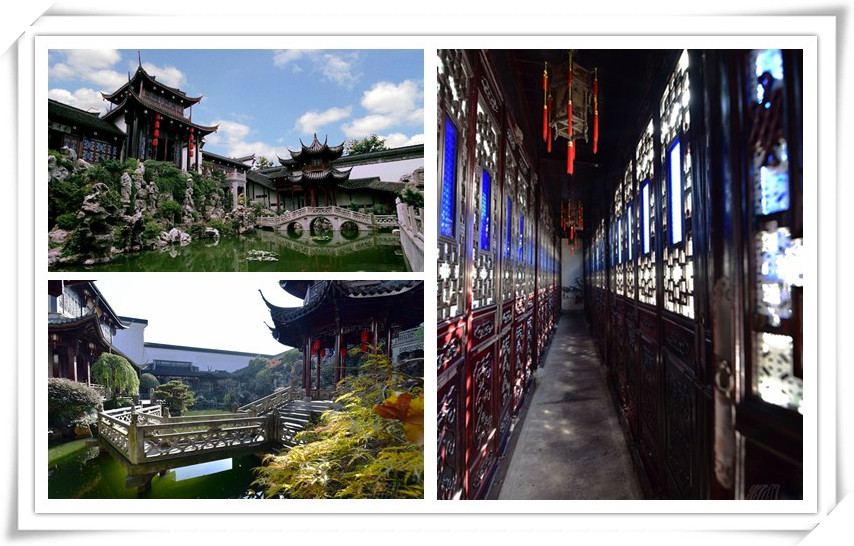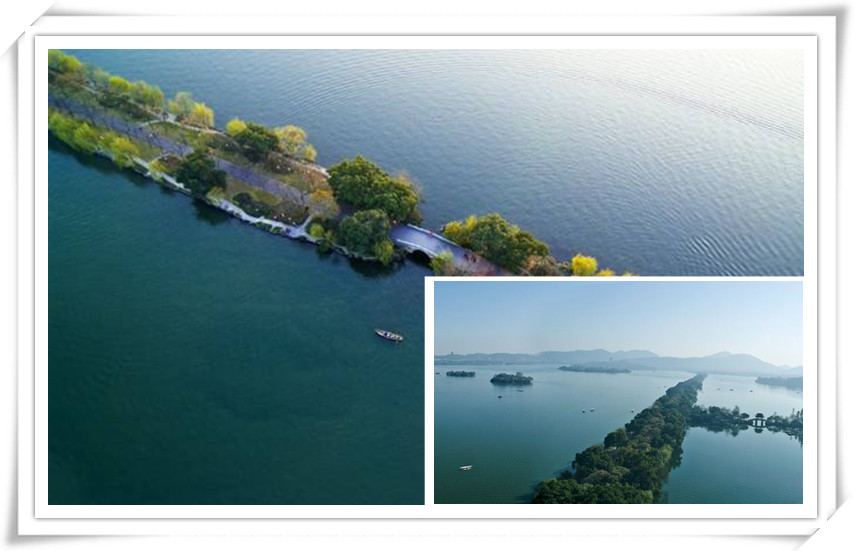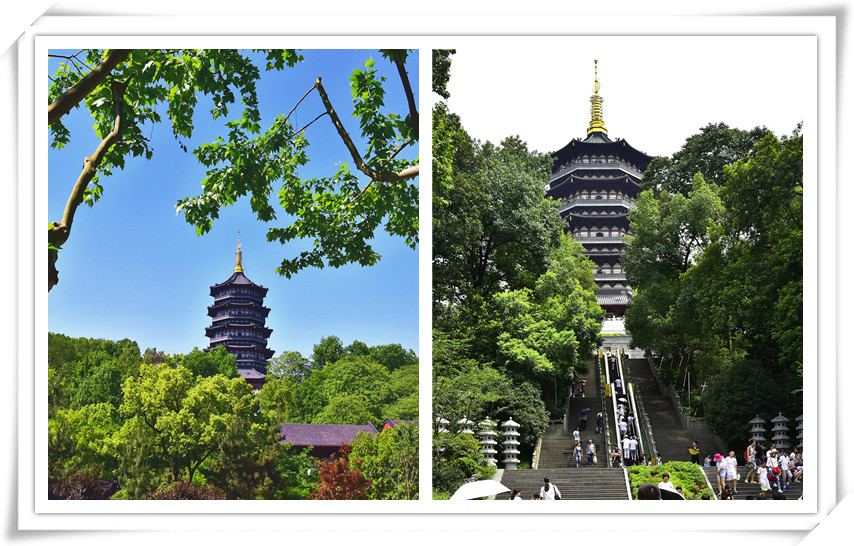Know Hangzhou from its People
From Hangzhou’s long and prosperous history, a large number of outstanding people have emerged, including the official and businessman - Hu Xueyan, the patriot general – Yue Fei, and the official and poet – Su Dongpo. To get to know them through the historical relics they left behind is part of getting to know Hangzhou’s history.

Besides being the witness of the ups and downs of Hu Xueyan’s life and an epitome of Hangzhou’s then economy, the Former Residence of Hu Xueyan is a piece of art itself. Hu Xuyan is the most famous official and businessman in China's modern history, and during his peak time, the wealth he owned back then was said to rival a country. Inside the residence is an underground vault, which he built to store all his gold and money.
The construction of the Former Residence of Hu Xueyan started in 1872 and took three years to complete. It is a masterpiece combining western-style features with traditional Chinese architecture. Speaking from either its exquisiteness or scale, it was the No. 1 mansion of the Chinese tycoon in the late Qing Dynasty.
From its obscure entrance, and simple and plain white walls, it’s hard for people to imagine the wealth that resided inside. The rectangular mansion complex has three buildings and a garden named Zhiyuan Garden (芝园). There are numerous exquisite brick, wood and stone engravings hidden among its many towers, pavilions, bridges, corridors and lanes. Zhiyuan Garden is the main body of the mansion where one can find the largest man-made karst cave existent to China.
Admission fee: 20 RMB
Opening hours: 08:00 – 17:30
Address: 18 Yuanbao Road, Shangcheng District, Hangzhou (杭州上城区元宝路18号)
Recommended Visiting Time: one to two hours
How to get there: take bus No. 30, 59, 60, 62, 71, 113, 116, 127, 216, 222, 315, 327, 334, 352 or 801 to the bus stop of the Former Residence of Hu Xueyan (hu xue yang gu ju: 胡雪岩故居).
 Su Dongpo, also known as Su Shi was a very talented person and a noted poet and official in Chinese history. He was the leader of the literary circles in the Northern Song Dynasty (1127). During his years serving as the governor of Hangzhou, he dredged the West Lake which had dried up and was covered with wild grass. During the process, in the deepest place of the West Lake, three pagodas (the current Pools Mirroring the Moon) were built to mark the event and the silk dredged from the lake was used to pile up a causeway spanning the West Lake and connected by six bridges. The causeway was later named Su Causeway to commemorate Su Dongpo. Every spring, at dawn, the Su Causeway is enveloped with mist with weeping willows and birds chirping, and thus has earned a position in the “Top Ten Views of West Lake.”
Su Dongpo, also known as Su Shi was a very talented person and a noted poet and official in Chinese history. He was the leader of the literary circles in the Northern Song Dynasty (1127). During his years serving as the governor of Hangzhou, he dredged the West Lake which had dried up and was covered with wild grass. During the process, in the deepest place of the West Lake, three pagodas (the current Pools Mirroring the Moon) were built to mark the event and the silk dredged from the lake was used to pile up a causeway spanning the West Lake and connected by six bridges. The causeway was later named Su Causeway to commemorate Su Dongpo. Every spring, at dawn, the Su Causeway is enveloped with mist with weeping willows and birds chirping, and thus has earned a position in the “Top Ten Views of West Lake.”
Admission fee: free
Opening hours: 24/7
How to get there: take bus No. 4, 31, 51, 52, 87, 315, 334, 514b, 822, Y6, Y10 or Y 2 to the bus stop of Su Causeway (su di: 苏堤)
Recommended visiting time: 30 to 50 minutes to walk the length of the causeway

Though a legend, Legend of the White Snake is part of Hangzhou’s culture and history. The legend, telling the tragic love story of Xu Xian and a snake-transformed girl, is extremely popular in China and the TV series based on it once caused the scene of empty streets and lanes during its broadcasting time when everyone stayed in front of the television to watch it.
The legend basically goes this way, in his previous life, the hero, Xu Xian saved a white snake which was practicing Buddhism. After achieving immortality, the white snake intended to pay back the favor and by transforming to a girl, she sought Xu Xian out and married him (In old-fashioned Chinese culture, the most common way for a girl to pay a favor is to marry her benefactor.) Xu Xian fell in love with her without knowing the truth and the two gave birth to a boy named Xu Shilin. After finding out the truth the cowardly Xu Xian abandoned the white snake and became a monk, while the White Snake was punished for breaking the laws of nature by marrying human and was imprisoned in Leifeng Pagoda for eighteen years before she was released by her son. In legend, Lefeng Pagoda collapsed because her son’s piety moved the heaven, actually Leifeng Pagoda collapsed because people constantly took bricks from its foundation which were believed to have the effect of wielding off evil spirits.
Inside the pagoda are many wood engravings telling the much-loved story. In addition to the abovementioned, Leifeng Pagoda is a vantage point to view the West Lake.
Address: 15 Nanshan Road, Xihu District, Hangzhou (杭州市西湖区南山路15号)
Admission fee: 40 RMB
Opening hours: 07:30 – 20:30
How to get there: take bus No. K4, K808, Y3, J5, 822/k822, K504, Y6, Y9, Y7 or 514 to the bus stop of Jingci Temple (jing si:净寺)
Recommended Visiting Time: one hour
Former Residence of Hu Xueyan – Hu Xueyan

Besides being the witness of the ups and downs of Hu Xueyan’s life and an epitome of Hangzhou’s then economy, the Former Residence of Hu Xueyan is a piece of art itself. Hu Xuyan is the most famous official and businessman in China's modern history, and during his peak time, the wealth he owned back then was said to rival a country. Inside the residence is an underground vault, which he built to store all his gold and money.
The construction of the Former Residence of Hu Xueyan started in 1872 and took three years to complete. It is a masterpiece combining western-style features with traditional Chinese architecture. Speaking from either its exquisiteness or scale, it was the No. 1 mansion of the Chinese tycoon in the late Qing Dynasty.
From its obscure entrance, and simple and plain white walls, it’s hard for people to imagine the wealth that resided inside. The rectangular mansion complex has three buildings and a garden named Zhiyuan Garden (芝园). There are numerous exquisite brick, wood and stone engravings hidden among its many towers, pavilions, bridges, corridors and lanes. Zhiyuan Garden is the main body of the mansion where one can find the largest man-made karst cave existent to China.
Admission fee: 20 RMB
Opening hours: 08:00 – 17:30
Address: 18 Yuanbao Road, Shangcheng District, Hangzhou (杭州上城区元宝路18号)
Recommended Visiting Time: one to two hours
How to get there: take bus No. 30, 59, 60, 62, 71, 113, 116, 127, 216, 222, 315, 327, 334, 352 or 801 to the bus stop of the Former Residence of Hu Xueyan (hu xue yang gu ju: 胡雪岩故居).
Su Causeway – Su Dongpo

Admission fee: free
Opening hours: 24/7
How to get there: take bus No. 4, 31, 51, 52, 87, 315, 334, 514b, 822, Y6, Y10 or Y 2 to the bus stop of Su Causeway (su di: 苏堤)
Recommended visiting time: 30 to 50 minutes to walk the length of the causeway
Leifeng Pagoda – Legend of the White Snake

Though a legend, Legend of the White Snake is part of Hangzhou’s culture and history. The legend, telling the tragic love story of Xu Xian and a snake-transformed girl, is extremely popular in China and the TV series based on it once caused the scene of empty streets and lanes during its broadcasting time when everyone stayed in front of the television to watch it.
The legend basically goes this way, in his previous life, the hero, Xu Xian saved a white snake which was practicing Buddhism. After achieving immortality, the white snake intended to pay back the favor and by transforming to a girl, she sought Xu Xian out and married him (In old-fashioned Chinese culture, the most common way for a girl to pay a favor is to marry her benefactor.) Xu Xian fell in love with her without knowing the truth and the two gave birth to a boy named Xu Shilin. After finding out the truth the cowardly Xu Xian abandoned the white snake and became a monk, while the White Snake was punished for breaking the laws of nature by marrying human and was imprisoned in Leifeng Pagoda for eighteen years before she was released by her son. In legend, Lefeng Pagoda collapsed because her son’s piety moved the heaven, actually Leifeng Pagoda collapsed because people constantly took bricks from its foundation which were believed to have the effect of wielding off evil spirits.
Inside the pagoda are many wood engravings telling the much-loved story. In addition to the abovementioned, Leifeng Pagoda is a vantage point to view the West Lake.
Address: 15 Nanshan Road, Xihu District, Hangzhou (杭州市西湖区南山路15号)
Admission fee: 40 RMB
Opening hours: 07:30 – 20:30
How to get there: take bus No. K4, K808, Y3, J5, 822/k822, K504, Y6, Y9, Y7 or 514 to the bus stop of Jingci Temple (jing si:净寺)
Recommended Visiting Time: one hour